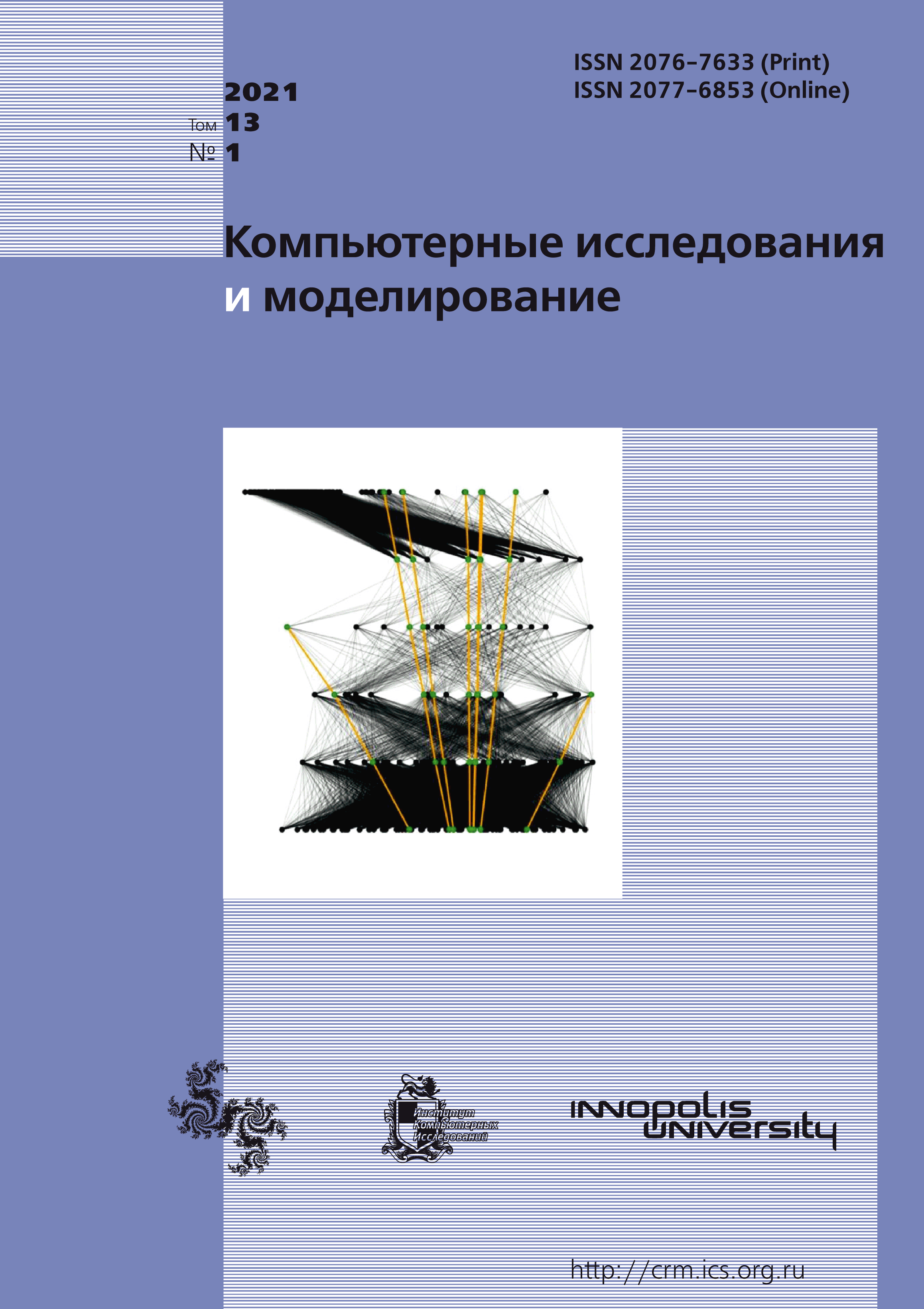All issues
- 2025 Vol. 17
- 2024 Vol. 16
- 2023 Vol. 15
- 2022 Vol. 14
- 2021 Vol. 13
- 2020 Vol. 12
- 2019 Vol. 11
- 2018 Vol. 10
- 2017 Vol. 9
- 2016 Vol. 8
- 2015 Vol. 7
- 2014 Vol. 6
- 2013 Vol. 5
- 2012 Vol. 4
- 2011 Vol. 3
- 2010 Vol. 2
- 2009 Vol. 1
Computer and physical-chemical modeling of the evolution of a fractal corrosion front
 pdf (27190K)
pdf (27190K)
Corrosion damage to metals and alloys is one of the main problems of strength and durability of metal structures and products operated in contact with chemically aggressive environments. Recently, there has been a growing interest in computer modeling of the evolution of corrosion damage, especially pitting corrosion, for a deeper understanding of the corrosion process, its impact on the morphology, physical and chemical properties of the surface and mechanical strength of the material. This is mainly due to the complexity of analytical and high cost of experimental in situ studies of real corrosion processes. However, the computing power of modern computers allows you to calculate corrosion with high accuracy only on relatively small areas of the surface. Therefore, the development of new mathematical models that allow calculating large areas for predicting the evolution of corrosion damage to metals is currently an urgent problem.
In this paper, the evolution of the corrosion front in the interaction of a polycrystalline metal surface with a liquid aggressive medium was studied using a computer model based on a cellular automat. A distinctive feature of the model is the specification of the solid body structure in the form of Voronoi polygons used for modeling polycrystalline alloys. Corrosion destruction was performed by setting the probability function of the transition between cells of the cellular automaton. It was taken into account that the corrosion strength of the grains varies due to crystallographic anisotropy. It is shown that this leads to the formation of a rough phase boundary during the corrosion process. Reducing the concentration of active particles in a solution of an aggressive medium during a chemical reaction leads to corrosion attenuation in a finite number of calculation iterations. It is established that the final morphology of the phase boundary has a fractal structure with a dimension of 1.323 ± 0.002 close to the dimension of the gradient percolation front, which is in good agreement with the fractal dimension of the etching front of a polycrystalline aluminum-magnesium alloy AlMg6 with a concentrated solution of hydrochloric acid. It is shown that corrosion of a polycrystalline metal in a liquid aggressive medium is a new example of a topochemical process, the kinetics of which is described by the Kolmogorov–Johnson– Meil–Avrami theory.
Copyright © 2021 Shibkov A.A., Kochegarov S.S.
Indexed in Scopus
Full-text version of the journal is also available on the web site of the scientific electronic library eLIBRARY.RU
The journal is included in the Russian Science Citation Index
The journal is included in the RSCI
International Interdisciplinary Conference "Mathematics. Computing. Education"






